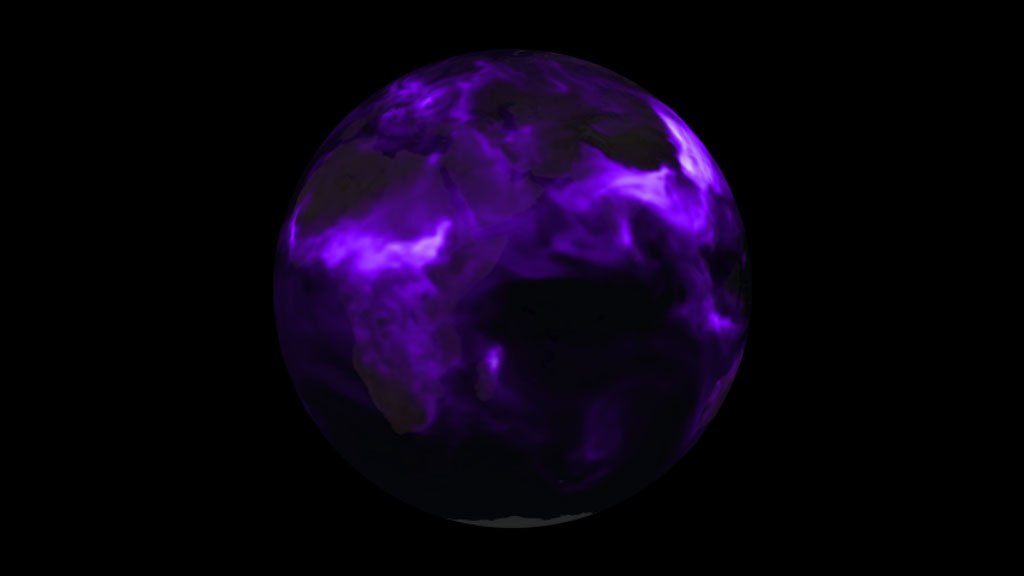Atmospheric Black Carbon Density
Black carbon, or soot, is formed from the burning of fossil fuels and biomass and lingers in the atmosphere for days or weeks before being deposited on the land or ocean. The transport and deposition of black carbon has become an important topic related to climate change since it can absorb sunlight and cause an increase in temperature on ice surfaces or in the atmosphere. The movement of black carbon in the atmosphere can be simulated by including existing black carbon data sets in a global model of the atmosphere. This animation shows the simulation of over three months of atmospheric black carbon production and movement from the Goddard Chemistry Aerosol and Transport (GOCART) model, which is driven by output of the GEOS5 global atmosphere simulation. Note the production of black carbon from industrialization in China and biomass burning in Africa, as well as the movement of black carbon across the oceans of the world.
The global atmospheric black carbon density from August 1, 2009 through November 19, 2009, from the GOCART model.
This product is available through our Web Map Service.
The global atmospheric black carbon density from August 1, 2009 through November 19, 2009, from the GOCART model. This version is laid over an image of the Earth.
This product is available through our Web Map Service.
The global atmospheric black carbon density from August 1, 2009 through November 19, 2009, from the GOCART model. This version has dates and is laid over an image of the Earth.

The background image of the Earth for the black carbon animation.
This product is available through our Web Map Service.

Color legend for black carbon optical thickness
Credits
Please give credit for this item to:
NASA/Goddard Space Flight Center Scientific Visualization Studio
-
Animator
- Horace Mitchell (NASA/GSFC)
-
Scientist
- William K. Lau (NASA/GSFC)
Release date
This page was originally published on Sunday, December 13, 2009.
This page was last updated on Sunday, June 23, 2024 at 10:01 PM EDT.
Datasets used
-
GEOS Atmospheric Model
ID: 665
Note: While we identify the data sets used on this page, we do not store any further details, nor the data sets themselves on our site.
